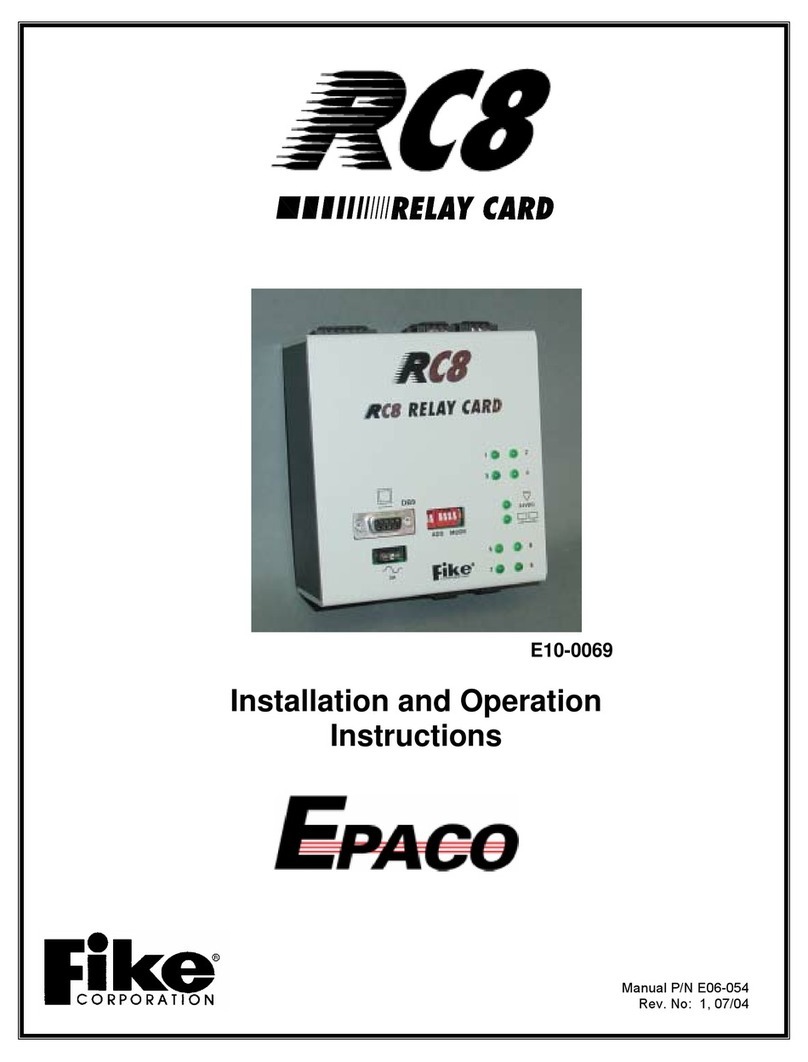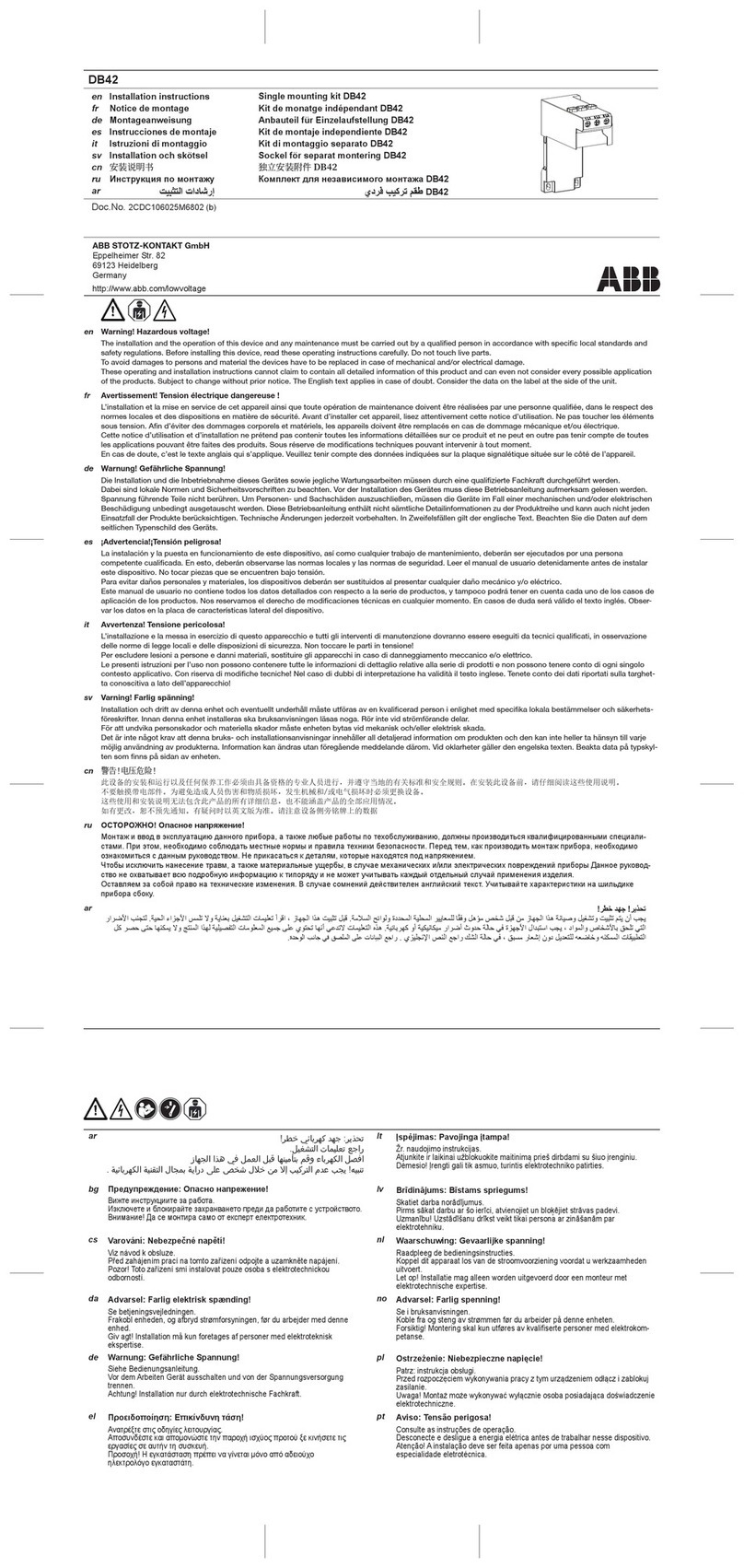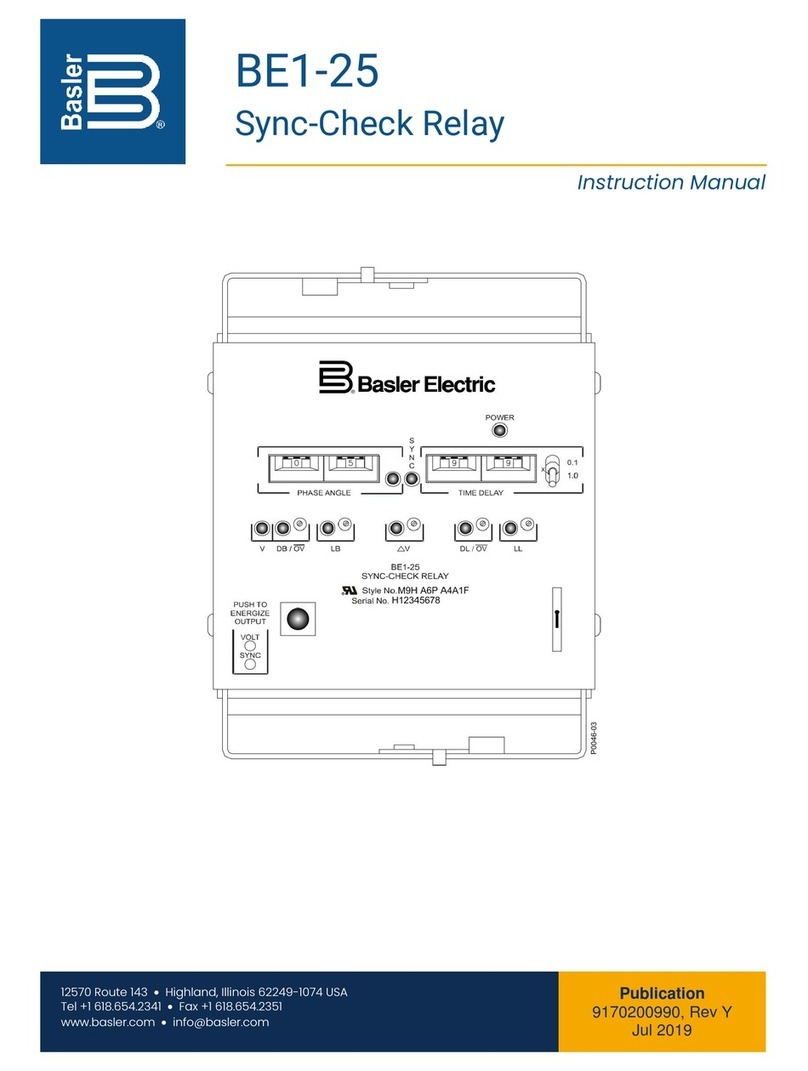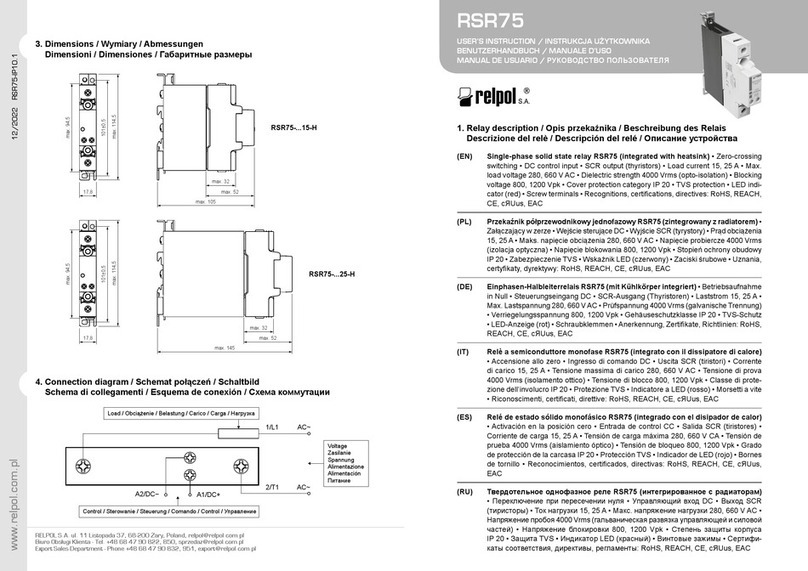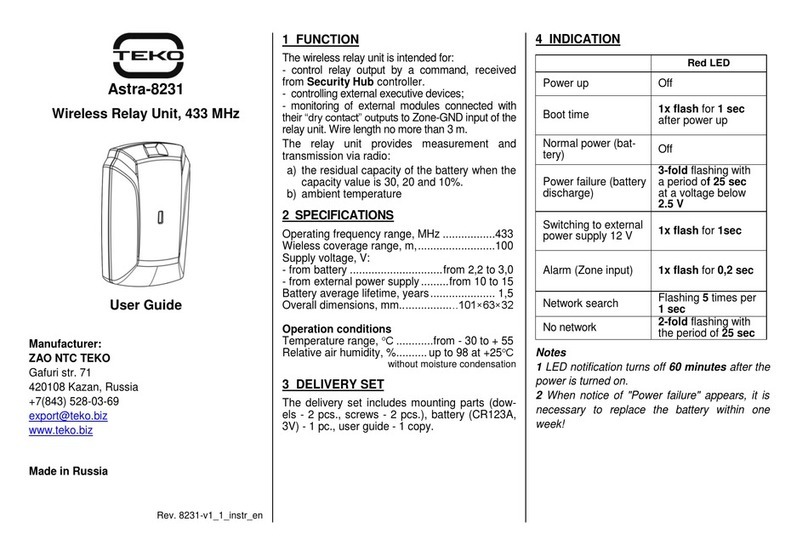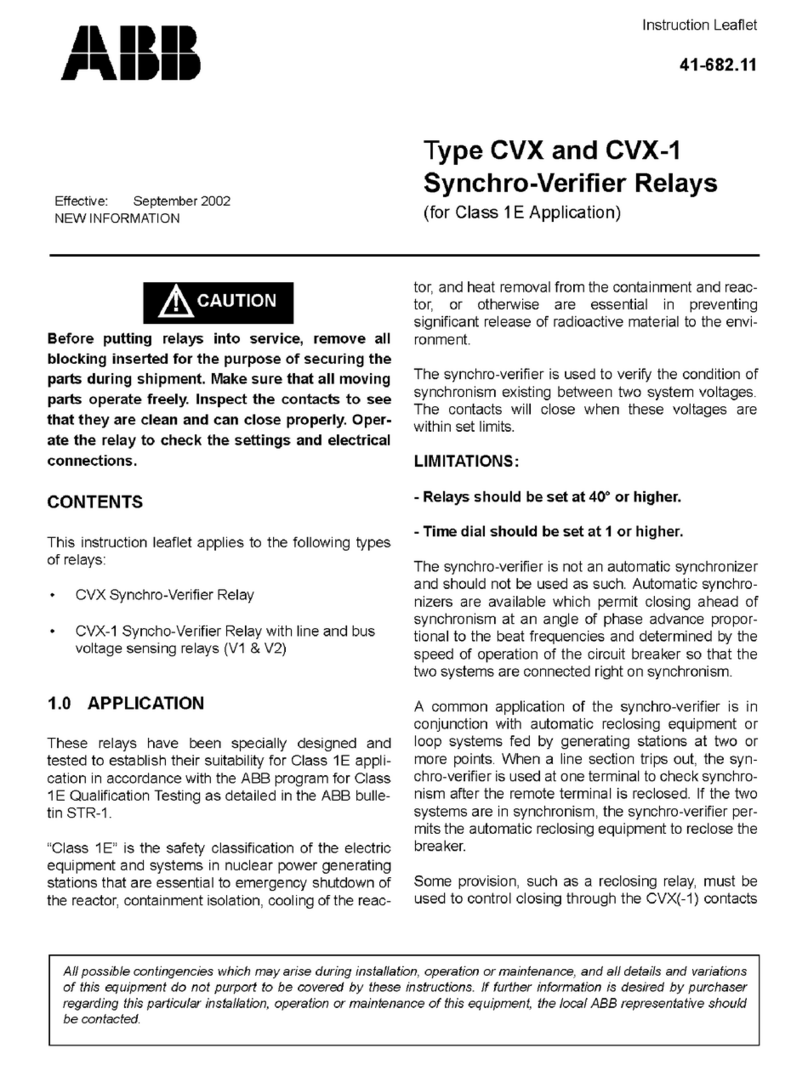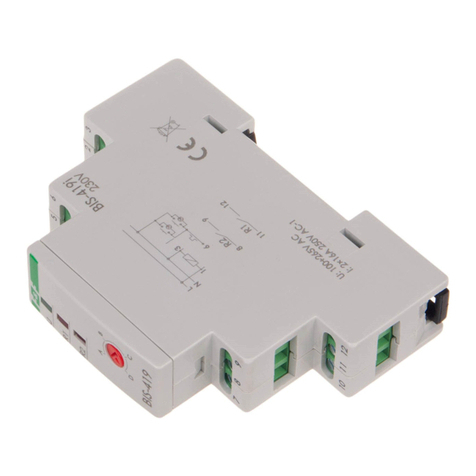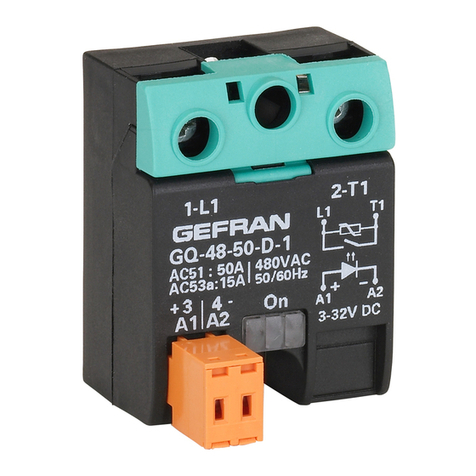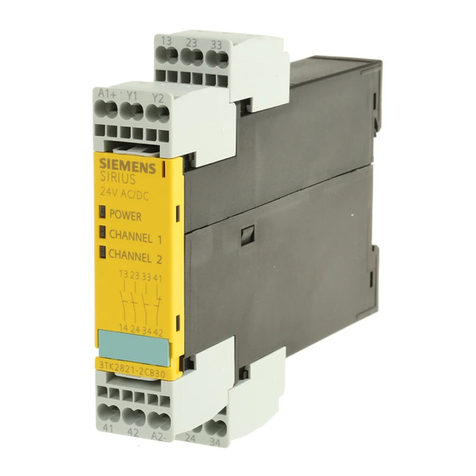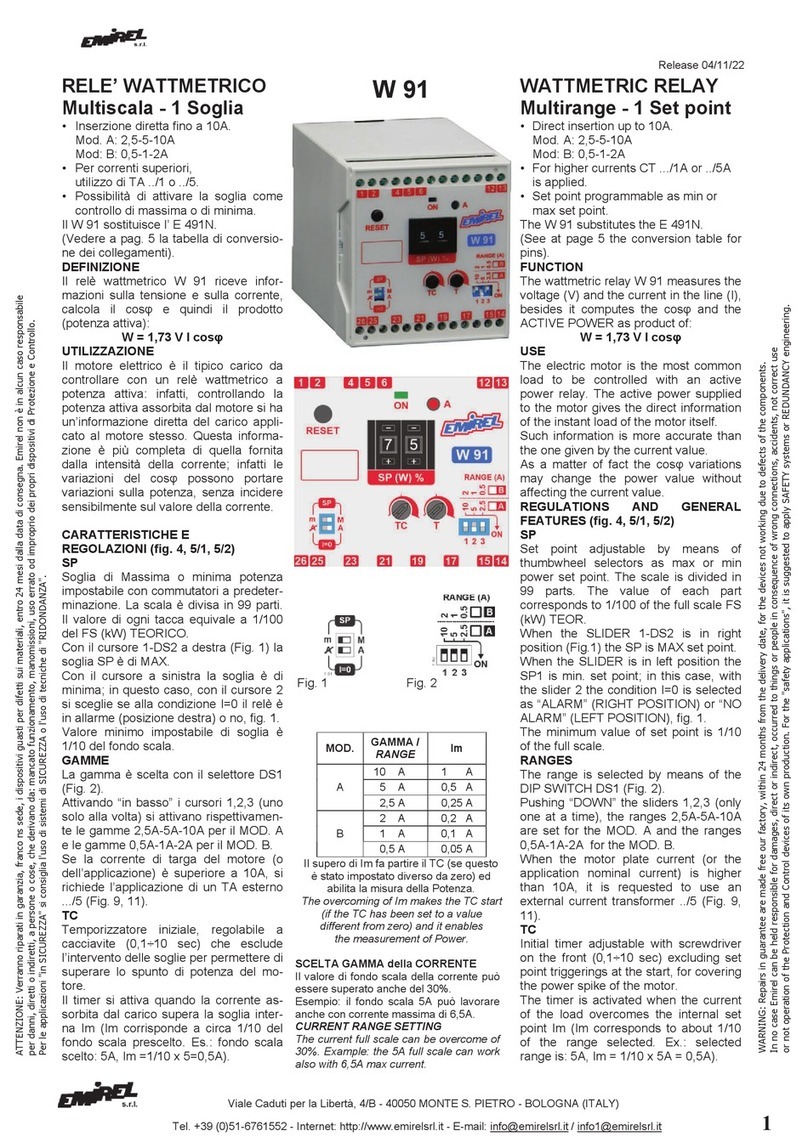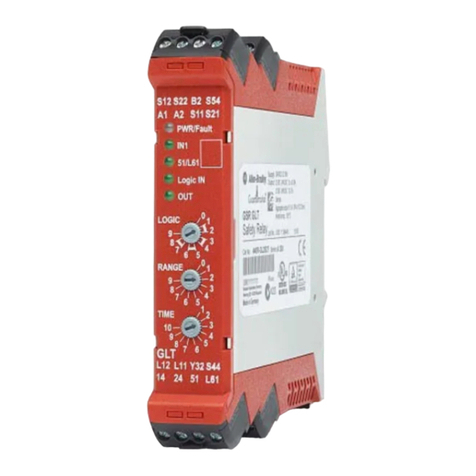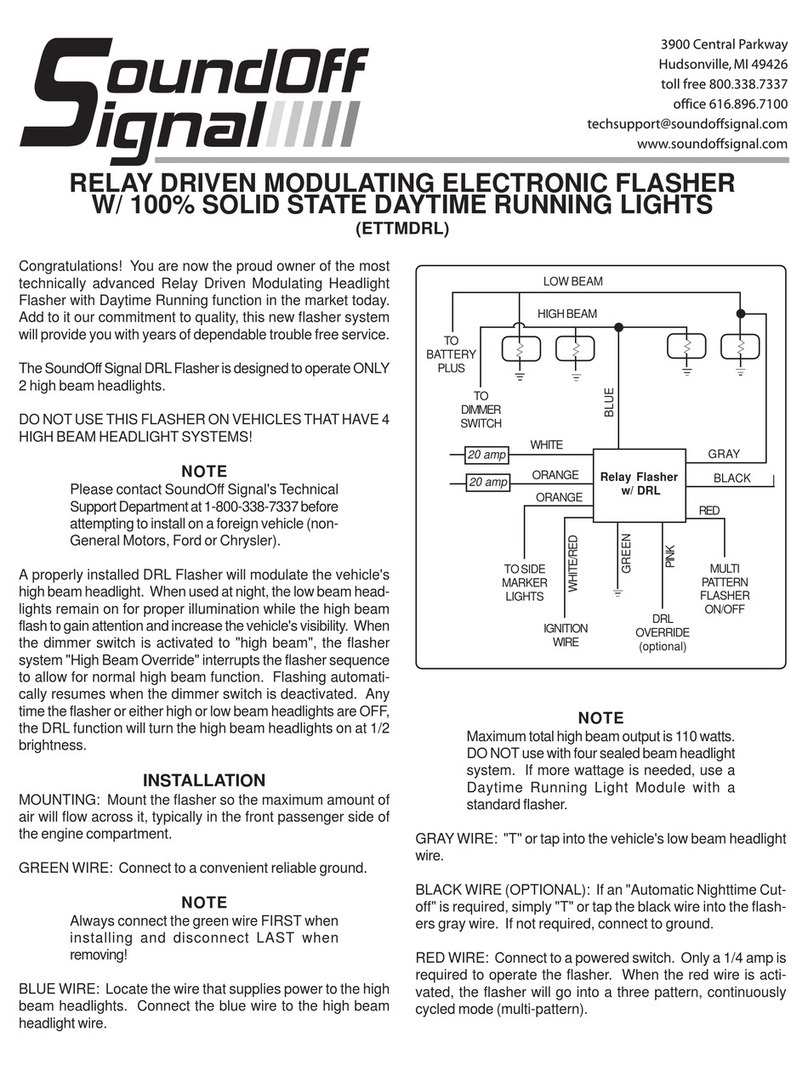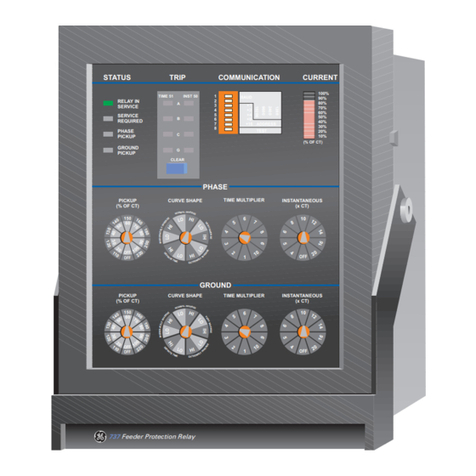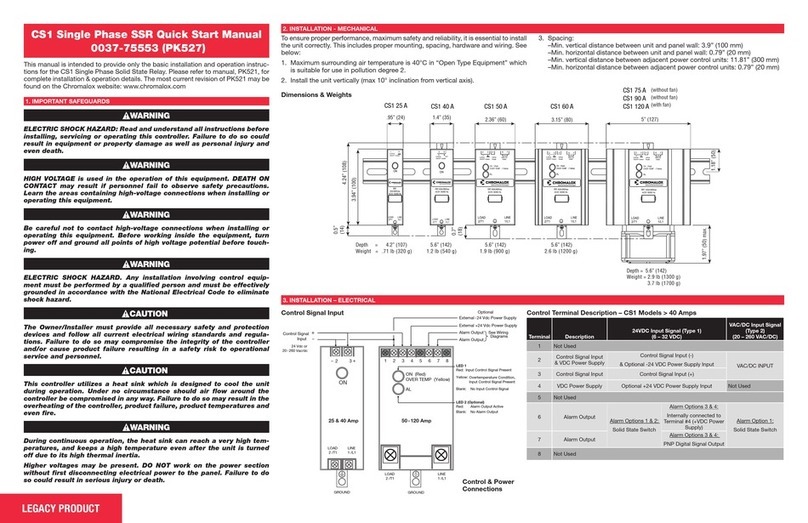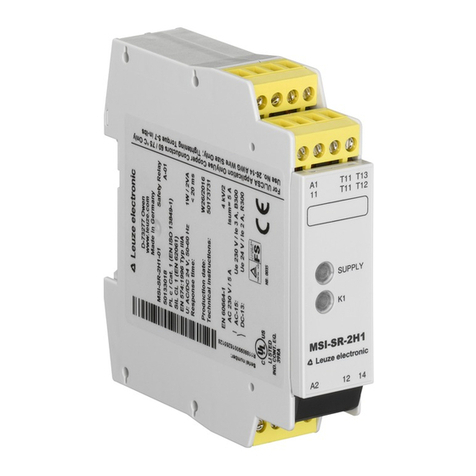Fike 55-048 User manual

BEFORE INSTALLING
This information is included as a quick reference installation guide. Refer to the
appropriate control panel installation manual for detailed system information.
If the modules will be installed in an existing operational system, inform the
operator and local authority that the system will be temporarily out of service.
NOTICE: This manual should be left with the owner/user of this equipment.
GENERAL DESCRIPTION
Relay Module, Model 55-048, is to be designed for use in activation of the
types of products that are generally connected to an intelligent fire alarm sys-
tem. It provides two sets of form C contacts that switch together (one DPDT
relay). There is also an input that is capable of monitoring a dry set of contacts
for open or closed conditions. The module also has on-board short circuit iso-
lators to prevent shorts on the signaling line circuit from disabling more than
one device on the intelligent loop.
COMPATIBILITY REQUIREMENTS
To ensure proper operation, this module shall be connected to a listed compat-
ible control panel.
MOUNTING
The module mounts directly to 4-inch square electrical boxes. The box must
have a minimum depth of 21⁄8inches. Modules must be mounted with the ar-
row facing upward for proper operation of the IR programming tool. Surface
mounted electrical boxes (SMB500) are available from Fike.
D500-78-00 1 I56-2469-006
INSTALLATION AND MAINTENANCE INSTRUCTIONS
55-048 Relay Module
SPECIFICATIONS
Normal Operating Voltage: 15 to 30 VDC
Standby Current: 580 µA max. average (continuous broadcasts)
Alarm Current: 2.0 mA (red LED on)
Short Circuit Current, Dry Control Input: 30 µA max. average (5 VDC)
Maximum Resistance, Dry Contact Input: 100 Ω
Temperature Range: 32°F to 120°F (0°C to 49°C)
Humidity: 10% to 93% RH Non-condensing
Dimensions: 4.675˝ H x 4.275˝ W x 1.4˝ D
Accessories: Wall cover plate (included); SMB500 Surface Mount Electrical Box; CB500 Control Module Barrier
NOTE: This module is not approved for use in the European Union, at or above 50VAC or 70VDC.
IR RECEIVER
LED INDICATOR
C0166-00
WIRING
NOTE: All wiring must conform to applicable local codes, ordinances, and
regulations.
1. Install module wiring in accordance with the job drawings and appropri-
ate wiring diagrams.
NOTE: Separate cable entry openings must be used to maintain required
spacing between power limited and non-power limited wiring. Optional
EA-CT may be required to separate power limited and non power limited
wiring in the electrical box.
2. Set the address on the module per job drawings using the IR configura-
tion tool (model no. EA-CT).
3. Secure module to electrical box (supplied by installer).
NOTE: All references to power limited represent “Power Limited (Class 2)”.
I56-2469-006
704 S. 10th Street
Blue Springs, MO 64015
Phone: 816.229.3405; Fax: 816.228.9277
R
RELAY CONTACT RATINGS:
FIGURE 1.:
CURRENT RATING MAXIMUM VOLTAGE LOAD DESCRIPTION APPLICATION
2 A 25 VAC PF = 0.35 Non-coded
3 A 30 VDC Resistive Non-coded
2 A 30 VDC Resistive Coded
0.46 A 30 VDC (L/R = 20ms) Non-coded
0.7 A 70.7 VAC PF = 0.35 Non-coded
0.9 A 125 VDC Resistive Non-coded
0.5 A 125 VAC PF = 0.75 Non-coded
0.3 A 125 VAC PF = 0.35 Non-coded

This device complies with part 15 of the FCC Rules. Operation is subject to the following two conditions: (1) This device may not cause harmful interference, and (2) this device must
accept any interference received, including interference that may cause undesired operation.
NOTE: This equipment has been tested and found to comply with the limits for a Class B digital device, pursuant to Part 15 of the FCC Rules. These limits are designed to provide
reasonable protection against harmful interference in a residential installation. This equipment generates, uses and can radiate radio frequency energy and, if not installed and used
in accordance with the instructions, may cause harmful interference to radio communications. However, there is no guarantee that interference will not occur in a particular installa-
tion. If this equipment does cause harmful interference to radio or television reception, which can be determined by turning the equipment off and on, the user is encouraged to try
to correct the interference by one or more of the following measures:
– Reorient or relocate the receiving antenna.
– Increase the separation between the equipment and receiver.
– Connect the equipment into an outlet on a circuit different from that to which the receiver is connected.
– Consult the dealer or an experienced radio/TV technician for help.
FCC STATEMENT
D500-78-00 2 I56-2469-006
©2013 Fike
FIGURE 2. WIRING DIAGRAM:
FROM PANEL OR
PREVIOUS PANEL
(–)
(+)
(–)
(+)
(–)
(+)
(–)
(+)
1
2
3
4
TO NEXT DEVICE
5
6
12
11
10
9
8
7
{
RELAY
CONT
ACTS
NOTE: NORMALLY OPEN OR
NORMALLY CLOSED CONTACT
DEVICE (NOT SUPERVISED).
NOTE: NORMALLY CLOSED
OPTION MAY NOT BE USED
FOR FIRE APPLICATIONS.
CONNECT MODULES
TO LISTED COMPATIBLE
CONTROL PANELS ONLY
NORMALLY OPEN (T12)
COMMON (T11)
NORMALLY CLOSED (T10)
NORMALLY OPEN (T9)
COMMON (T8)
NORMALLY CLOSED (T7)
RELAY
CONTACT
#2
RELAY
CONTACT
#1
SIGNAL LINE CIRCUIT (SLC)
30 VDC MAX.
TWISTED PAIR RECOMMENDED AND IS POWER
LIMITED AND SUPERVISED
MODULE DOES NOT SUPER-
VISE CONTROLLED CIRCUITS.
TERMINALS 1-6 ARE POWER
LIMITED. TERMINALS 7-12 ARE
NON-POWER LIMITED.
C0110-02
AUTO ADDRESSING
Eclipse Series devices are capable of supporting auto addressing, if the fire
alarm control panel is designed to do so. In auto addressing, the control panel,
through the use of each device’s on-board isolators, can automatically assign
device addresses.
In order to control which devices are addressed first in wiring configurations
with branches, a branch marker can be set at a particular device. A branch
marker is an electronic value from 0 to 255 stored in the device memory. The
branch markers are set with the IR configuration tool, EA-CT.
TERMINAL DEFINITIONS
T1 (+) SLC in/out T7 Normally Closed #1
T2 (–) SLC in/out T8 Common #1
T3 (+) SLC in/out T9 Normally Open #1
T4 (–) SLC in/out T10 Normally Closed #2
T5 (+) Dry Contact Input T11 Common #2
T6 (–) Dry Contact Input T12 Normally Open #2
WARNING
All relay switch contacts are shipped in the standby state (open) state, but may
have transferred to the activated (closed) state during shipping. To ensure that
the switch contacts are in their correct state, modules must be made to com-
municate with the panel before connecting circuits controlled by the module.
Table of contents
Other Fike Relay manuals
